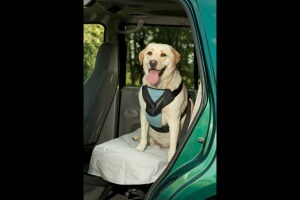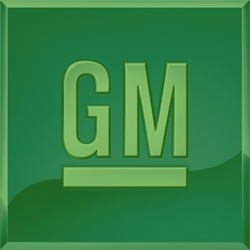How well do you know the history of Chevy?

Its Impalas dropped us off at school. Its pickup trucks hauled our produce on the farm. Its Corvette sustained our sports car fantasies through the boredom of high school algebra class. Earlier than almost any other automotive brand, Chevy created a palette of vehicles that ranged from the small and thrifty to the sleek and sporty to the large and smartly trimmed.
Multimedia
Once the model line expanded beyond the limited body selections of its first half-century, there was a Chevy for almost everyone. The brand’s broad appeal resulted in a place atop the sales charts starting in the 1930s and continuing nearly uncontested for decades. By the mid-1960s Chevrolet sold nearly three million cars and light-duty trucks a year.
But there’s more to the story than commercial success. Although it occupied the first rung of Alfred P. Sloan’s General Motors hierarchy, a ladder on which customers would move up to more expensive brands as they gained affluence, Chevy developed a following of fans whose devotion lasted a lifetime. After decades of decline, Chevrolet has lately had a resurgence with its Cruze and Malibu sedans, the reinvented Camaro and the Volt, the first mass-produced plug-in hybrid.
The full Chevrolet story has filled volumes. Here are some highlights of the 100-year journey.
EARLY DAYS
IN a fateful twist of Chevrolet history, the man who lent his name to the automaker is largely forgotten.
Louis Chevrolet was the Mario Andretti of his day. He barnstormed the country, consistently beating the likes of Barney Oldfield. He escaped horrible crashes that claimed the lives of lesser and unluckier drivers, and won the admiration of those considering the purchase of a newfangled horseless carriage.
The Swiss-born Chevrolet was flamboyant, swashbuckling, outspoken and charismatic. He had a bushy mustache, a foppish grin and he chain-smoked smelly yellow French cigarettes.
In 1909, Chevrolet was hired to drive for the Buick racing team. Of course, the entrepreneurial William C. Durant, who founded General Motors, wanted to find a way to leverage Chevrolet’s name to his advantage. At first it was enough that the driver’s prowess in racing Buicks to victory helped to put that company on its way to sales success.
But Durant, who lost control of G.M. in 1910 after a failed bid to buy Ford, saw a bigger opportunity for Louis Chevrolet than merely selling Buicks. So after acquiring the Little automobile company, Durant sought out the race driver to start yet another auto brand. Louis agreed, and on Nov. 3, 1911, Chevrolet’s formation was announced; Louis designed and engineered the large, powerful 6-cylinder automobile that bore his name.
“It was a marvelous machine — the Model C, as it was called,” said Jay Leno, a collector and admirer of Chevrolets. “It was one of the finest and fastest automobiles of the day. It just didn’t sell well. It was too expensive.”
Pressured by Durant to come up with a lower-price automobile to compete with the Ford Model T, Louis said he did not want his name associated with a cheaper car. By 1914, Louis offered to sell his stock in the company, and Durant readily agreed.
After Louis moved on, Durant began rebadging the smaller, inexpensive Littles as Chevrolets, and they found willling buyers. By 1916, Chevrolet had generated enough profits for Durant to buy back control of G.M., into which he merged Chevrolet.
With the 1918 introduction of the Model D, powered by an 8-cylinder engine, Chevrolet sought to further increase its sales and market share and challenge Ford. But the low-cost 4-cylinder models continued as the big sellers. In 1927, when Ford’s River Rouge plant was shut for a time, Chevrolet briefly took the industry’s sales lead.
For its 1929 models, Chevrolet made a huge gamble. While other carmakers were promoting the use of lightweight aluminum, 8-cylinder motors and the advantage of large displacement, Chevrolet seemingly backtracked, introducing a cast-iron 6-cylinder. As the economy slumped, the engine’s once-derisive nickname — the Stovebolt Six — was transformed into a selling point: “A Six for the Price of a Four.”
And what of Louis Chevrolet? He went on to form two more automobile companies, Cornelian and Frontenac, which made the car in which his brother Gaston won the 1920 Indianapolis 500. After Gaston died in a racing accident, Louis left the auto industry and began designing aircraft engines with his brother Arthur; his “Chevrolair 333” and a brief association with an aviation pioneer, Glenn L. Martin, formed the basis for Martin Marietta (now Lockheed Martin).
Multimedia
But Chevrolet, despite his engineering and mechanical genius, never lasted long in any partnership. He died in Detroit, virtually penniless and largely unremembered, on June 6, 1941. He was 62.
— JERRY GARRETT
POPULAR CULTURE
AMERICANS who grew up alongside the Honda Accord or the Hyundai Elantra may not fully appreciate the chromed grip Chevrolet had on popular culture in an age when American wheels ruled the road.
In the 1950s, if you tuned in “The Dinah Shore Chevy Show” on your Magnavox console TV, you heard the host belting out “See the U.S.A. in Your Chevrolet.” Starting in 1960, on CBS, George Maharis and Martin Milner roamed “Route 66” in a new Corvette, looking for adventure, lending a hand to strangers in need and creating a desirable career goal — having a cool car, but no permanent job or home address — for countless young viewers.
Later in the decade, Chevrolet was a primary sponsor of several of the most popular comedies and dramas on television. Samantha, on “Bewitched,” parked her broom to cruise in a Chevelle. The Cartwrights of “Bonanza” rode horses on the Ponderosa, but during commercial breaks they rounded up Impalas and Chevy IIs.
On the radio, Chevys crowded out the Hot Rod Lincolns and Pink Cadillacs. By 2003, G.M. claimed that some 200 songs had already featured or mentioned Chevrolets. A sign in Detroit boasted, “They don’t write songs about Volvos.”
“Nothing can touch my 409,” the Beach Boys bragged. In the days of surfer rock and street racing, the engine was so famous there was no need to identify the car. Don McLean drove his Chevy to the levee in “American Pie,” and Prince had a thing for a little red Corvette. Bob Seger, whose “Like a Rock” became the Chevy Trucks theme, practiced his night moves “in the back seat of my ’60 Chevy.”
At the movies, the sexiest Chevy, the Corvette, co-starred with hunks like Elvis Presley (“Clambake,” 1967) and Mark Hamill (“Corvette Summer,” 1978). In “Terms of Endearment” (1983), the washed-up astronaut played by Jack Nicholson memorably drove a Corvette with his feet — into the ocean. That same year, in “The Right Stuff,” another space hero said that getting a ’Vette was one of best things about being an astronaut. — JAMES G. COBB
DESIGN
“AN infamous rear end” was Alfred P. Sloan Jr.’s complaint about Chevrolets of the early 1920’s, and when he gained power at General Motors he had the problem fixed. Sloan, who oversaw G.M.’s growth into one of the world’s largest corporations, saw Chevrolet as a way to challenge Henry Ford’s dominant Model T: for just a little more money, Chevy would give you much more car, along with a bit of style.
By the late ’20s, Chevys wore bright shades of Duco lacquer, a colorful contrast to black-only Fords. And Harley Earl’s styling studios were turning out flourishes that appeared first on Cadillacs, then on Buicks and Oldsmobiles, and, eventually, on Chevrolets, trickling down Sloan’s “ladder of brands” along with engineering innovations.
By 1936, G.M. was able to boast that all of its cars had full stamped-steel bodies — even Chevrolet. Styling changes became frequent and rapid-fire, manufacturing customer discontent by rendering last year’s cars instantly obsolete.
The succession of 1955, ’56 and ’57 Chevrolets — three notably different twists on the same basic car — may be the quintessential example of Detroit’s annual model changes.
The tailfins that first appeared on late 1940s Cadillacs and reached unimagined heights through the ’50s, arrived on the 1955 Chevrolet in muted form. But these were different: less extreme than Cadillac’s, yet more jaunty — like the sails of a fast racing sloop beside a full-rigged clipper.
Read the rest of the article (including the history of Chevy’s marketing, racing and technology) at http://www.nytimes.com/2011/10/23/automobiles/chevrolet-unlikely-cornerstone-for-gm.html












































.jpg)


